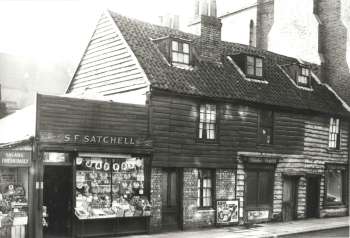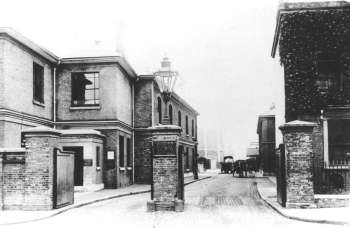History of Sydenham
Sydenham has literally moved a long way since the Middle Ages. Now its centre is around the station, at the north end of Sydenham Road, but its origins lie a mile distant in Perry Hill, on the northern slope of the Pool River valley. Gradually the farms pushed north from Bell Green along the line of Sydenham Road until further progress was halted by Westwood Common.
The name was Sippenham until the eighteenth century - the village of Cippa (an Old English name). It was a small settlement, a few cottages among the woods, whose inhabitants could graze their animals and collect wood on the Common. In 1614 the leaseholder of the common attempted to enclose it, fencing off the land so that local people could not use it. Led by the Vicar of Lewisham, Abraham Colfe, the commoners took the case to court and won. Eventually the common was enclosed by act of Parliament in 1810.
In the 1640s springs of water in and around what is now Wells Park were discovered to have medicinal properties, and crowds were soon coming to drink the waters. This led to the building of larger houses, perhaps to lodge the water drinkers. Wealthy people began to settle in the area.
The London and Croydon Railway was built through the area in the late 1830s, following the basic route of the failed Croydon Canal. The opening of Sydenham Station in 1839 made the village a practical place of residence for wealthy commuters, and good quality houses began to appear near the station, especially on the former common.
In 1851 the Great Exhibition in Hyde Park was housed in an immense glass building, called the Crystal Palace. In 1854 the building was bought by a private company, dismantled and re-erected on the hill above Sydenham. Exhibitions, concerts, conferences and sporting events were held at the Crystal Palace (until it burned down in 1936), and Sydenham became a fashionable area.
Many new luxury houses were built in a very short time. They could be supplied with gas from the Crystal Palace and District Gas Company’s works at Bell Green, which continued production until 1969. A large store now occupies part of the gasworks site.









